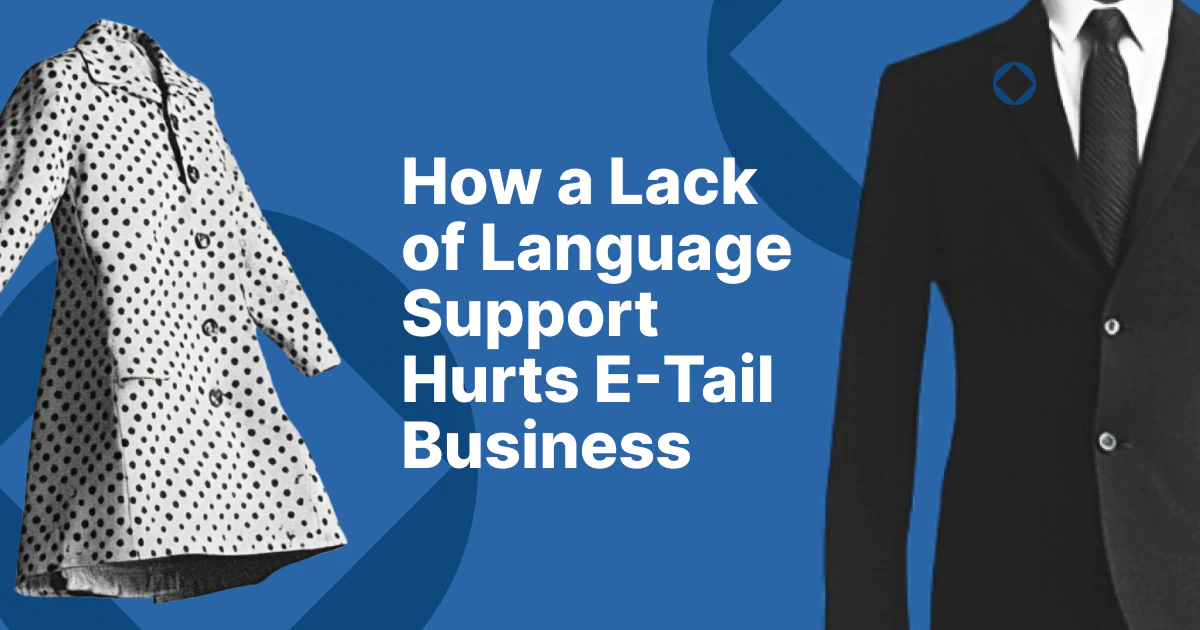The world of e-tail is more interconnected than ever, with cross-border shopping surging and global consumers expecting seamless experiences from the brands they trust. In 2023 alone, cross-border e-commerce sales reached $3.53 trillion, and nearly 57% of online shoppers purchase from e-tailers outside their borders. But as brands race to capture this growing global audience, there's one essential that you don't want to overlook—multilingual customer support.
When customers can't communicate their needs or understand the solutions offered, frustration sets in fast. Language barriers don't just create momentary friction—they create lost sales, repeat inquiries, and a growing reputation gap that's hard to repair. 30% of businesses without this support have outright lost customers. Here's how a lack of localized and multilingual support is failing your international audience—and what you can do about it.
The Multilingual Miss: 3 Ways a Lack of Multilingual Support Hurts Business
It Drives Up Costs
Some brands assume that skipping multilingual support will save money. In reality, it does the opposite. When agents struggle to communicate with customers due to language barriers, issues take longer to resolve. Instead of providing quick, efficient solutions, agents spend valuable minutes (or hours) deciphering poorly translated inquiries, relying on clunky auto-translation tools, or escalating tickets unnecessarily.
Without it, frustration leads to higher abandonment rates and more repeat inquiries. When an issue isn't resolved the first time due to a language gap, it returns as a more complex and expensive ticket, eating up agent bandwidth and increasing operational costs. A single high-quality resolution in a customer's language is far cheaper than multiple escalations caused by confusion.
It Damages the Brand's Reputation
Language support isn't just about convenience—it directly impacts customer sentiment. A response that's unclear or clunky because of a language barrier can make customers feel ignored, dismissed, and ready to walk away. And when they do, they won't do it quietly.
... a language barrier can make customers feel ignored, dismissed, and ready to walk away. And when they do, they won't do it quietly.
Bad support has consequences. 86% of buyers hesitate to purchase from businesses with negative reviews about poor customer service, and language struggles rank high on the list of complaints.
However, the reverse is also true. When customers get support in their preferred language, they're far more forgiving. In fact, 62% are more likely to tolerate product issues if they can actually communicate with support, and 58% are even willing to wait longer if it means getting help in a language they understand.
That gives your business more goodwill and breathing room to work with when support needs arise. Best of all, it can bring customers in for the long haul. A full 70% of customers feel more loyal to brands that offer support in their native language. Miss that mark, and you're handing business to the competition. In a crowded market where customer loyalty is everything, multilingual support can make or break your revenue.
It Weakens Your Support
Many e-tailers believe they've checked the multilingual box simply by translating their website or chatbot. But rushed translation without localization support is a recipe for disaster. Policies, warranties, and legal requirements differ across markets, and if your support options don't account for those differences, you're potentially misleading customers.
Imagine a customer in Spain reading a return policy initially written for the U.S. market if the translated version fails to mention that European returns require specific documentation, that customer will have a bad experience. They'll contact support for clarification, creating extra work for your team, and they may end up frustrated enough to leave a negative review or dispute the transaction.
Self-service tools are supposed to reduce ticket volumes, but poorly translated FAQs or chatbots do the opposite. It drives customers to support for clarification they should have had upfront. If they have to struggle through vague or misleading policies, they won't just abandon the purchase—they'll abandon the brand.
... they won't just abandon the purchase—they'll abandon the brand.
Investing in teams that understand the difference between simple translation and full localization is key. Properly adapted support content keeps customers confident, reduces unnecessary inquiries, and protects your brand's reputation.
Fixing the Multilingual Gap: A Smart Investment
In e-tail, customer support can drive revenue up or send it tumbling down. Every time a customer struggles to communicate, has to contact support multiple times, or walks away due to confusion, you're losing revenue and trust. On the other hand, when a shopper gets fast, clear answers in their language, they don't just complete the purchase; they come back. They leave positive reviews. They tell their friends.
Make multilingual support a priority, and you'll see the difference where it matters most: in your revenue, retention, and reputation across the markets in which your business operates.




